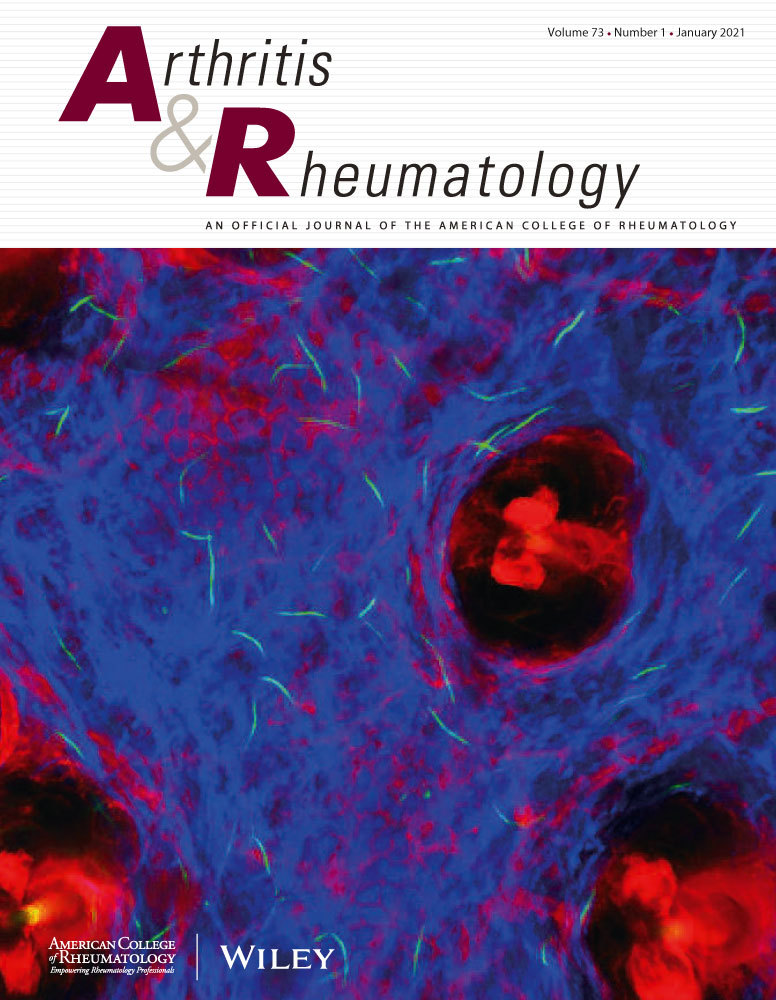Transition from psoriasis to psoriatic arthritis is characterized by distinct alterations in peripheral blood Tc17, Th17 and CD4+ TEM cells.
IF 10.9
1区 医学
Q1 RHEUMATOLOGY
引用次数: 0
Abstract
OBJECTIVE Cellular mechanisms driving transition from psoriasis to psoriatic arthritis have remained largely elusive. Thus, we investigated changes within the peripheral blood T cell compartment associated with the transition phase. METHODS In an observational study, 116 patients were examined and categorized into subgroups including psoriasis with at least one risk factor for transition to psoriatic arthritis, subclinical psoriatic arthritis according to EULAR taskforce recommendations from 2023, and definitive psoriatic arthritis meeting the CASPAR criteria. Demographic and clinical characteristics of patient subgroups were analyzed. Deep T cell phenotyping using multicolor flow cytometry and machine learning techniques were applied. RESULTS Overlapping T cell endotypes were found among patients with subclinical psoriatic arthritis exhibiting the most notable divergence from the others. Frequencies of effector memory CD4+ T (TEM) cells, T helper 17 (Th17) and T cytotoxic 17 (Tc17) cells differed between psoriasis with at least one risk factor for transition, subclinical psoriatic arthritis and psoriatic arthritis. Transition-associated changes of Tc17 cell frequencies were confirmed by machine learning-assisted unsupervised clustering analysis. Moreover, patients with enthesitis could be distinguished from those without, with Tc17 cells being the main distinctive feature. CONCLUSION Transition from psoriasis to psoriatic arthritis was associated with distinct alterations of the peripheral blood T cell compartment with Tc17 cells exhibiting the greatest discriminatory power. These findings provide insight into pathomechanisms driving disease progression during transition from psoriasis to psoriatic arthritis and identify Tc17 cells as foremost novel potential therapeutic target for the prevention of transition.从银屑病到银屑病关节炎的转变以外周血Tc17、Th17和CD4+ TEM细胞的明显改变为特征。
目的:银屑病向银屑病关节炎转变的细胞机制在很大程度上仍然是难以捉摸的。因此,我们研究了与过渡期相关的外周血T细胞室的变化。方法:在一项观察性研究中,116例患者被检查并分为三个亚组,包括至少有一个危险因素转变为银屑病关节炎的银屑病、根据EULAR工作组2023年建议的亚临床银屑病关节炎和符合CASPAR标准的明确银屑病关节炎。分析患者亚组的人口学和临床特征。使用多色流式细胞术和机器学习技术进行深度T细胞表型分析。结果亚临床银屑病关节炎患者的T细胞内型存在重叠,差异最显著。效应记忆CD4+ T (TEM)细胞、T辅助17 (Th17)和T细胞毒性17 (Tc17)细胞的频率在至少有一种转行、亚临床银屑病关节炎和银屑病关节炎危险因素的银屑病患者之间存在差异。通过机器学习辅助的无监督聚类分析证实了Tc17细胞频率的过渡相关变化。此外,可以区分患有和没有感染的患者,以Tc17细胞为主要特征。结论银屑病向银屑病关节炎的转变与外周血T细胞区室的明显改变有关,其中Tc17细胞表现出最大的鉴别能力。这些发现提供了从银屑病到银屑病关节炎转变过程中驱动疾病进展的病理机制,并确定Tc17细胞是预防转变的最重要的新的潜在治疗靶点。
本文章由计算机程序翻译,如有差异,请以英文原文为准。
求助全文
约1分钟内获得全文
求助全文
来源期刊

Arthritis & Rheumatology
RHEUMATOLOGY-
CiteScore
20.90
自引率
3.00%
发文量
371
期刊介绍:
Arthritis & Rheumatology is the official journal of the American College of Rheumatology and focuses on the natural history, pathophysiology, treatment, and outcome of rheumatic diseases. It is a peer-reviewed publication that aims to provide the highest quality basic and clinical research in this field. The journal covers a wide range of investigative areas and also includes review articles, editorials, and educational material for researchers and clinicians. Being recognized as a leading research journal in rheumatology, Arthritis & Rheumatology serves the global community of rheumatology investigators and clinicians.
 求助内容:
求助内容: 应助结果提醒方式:
应助结果提醒方式:


